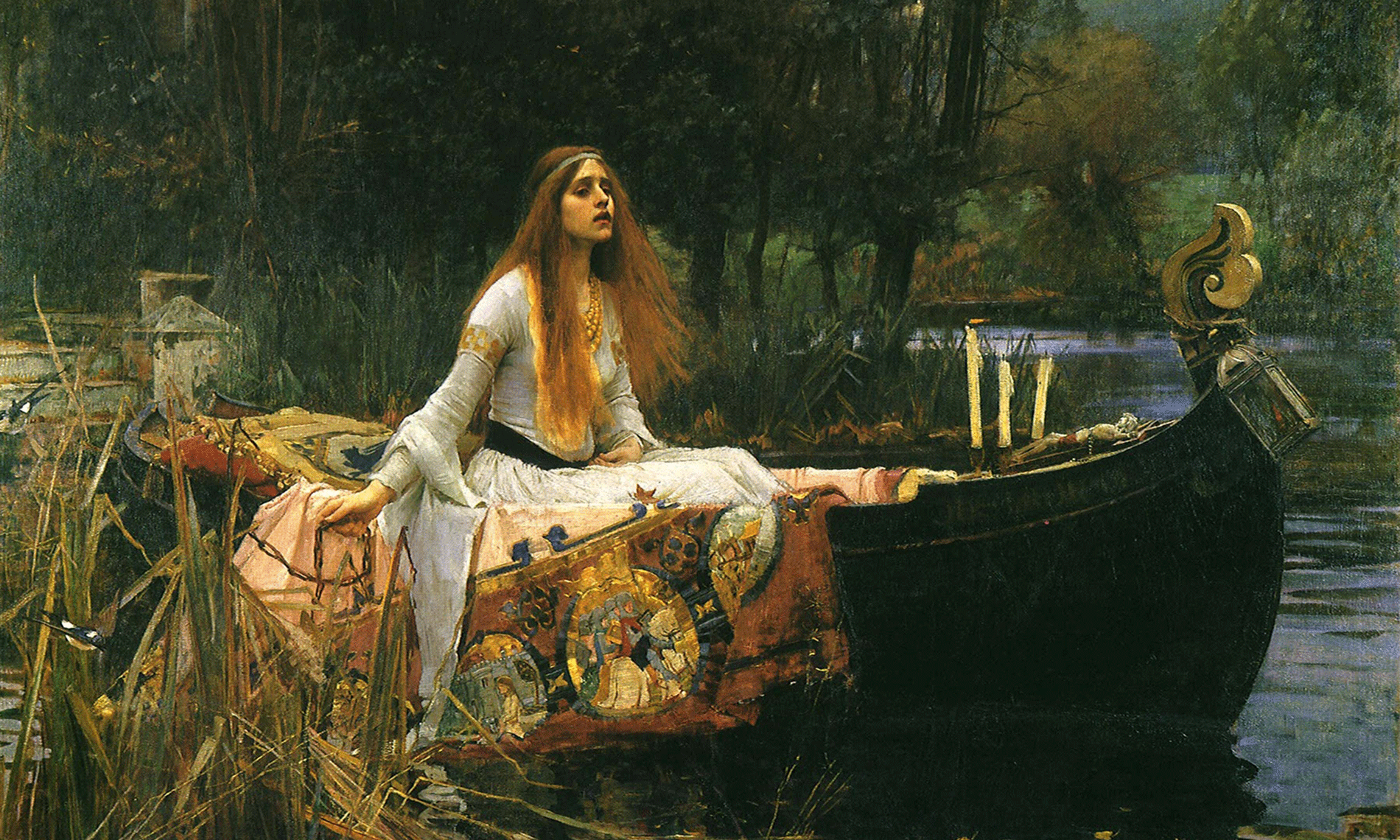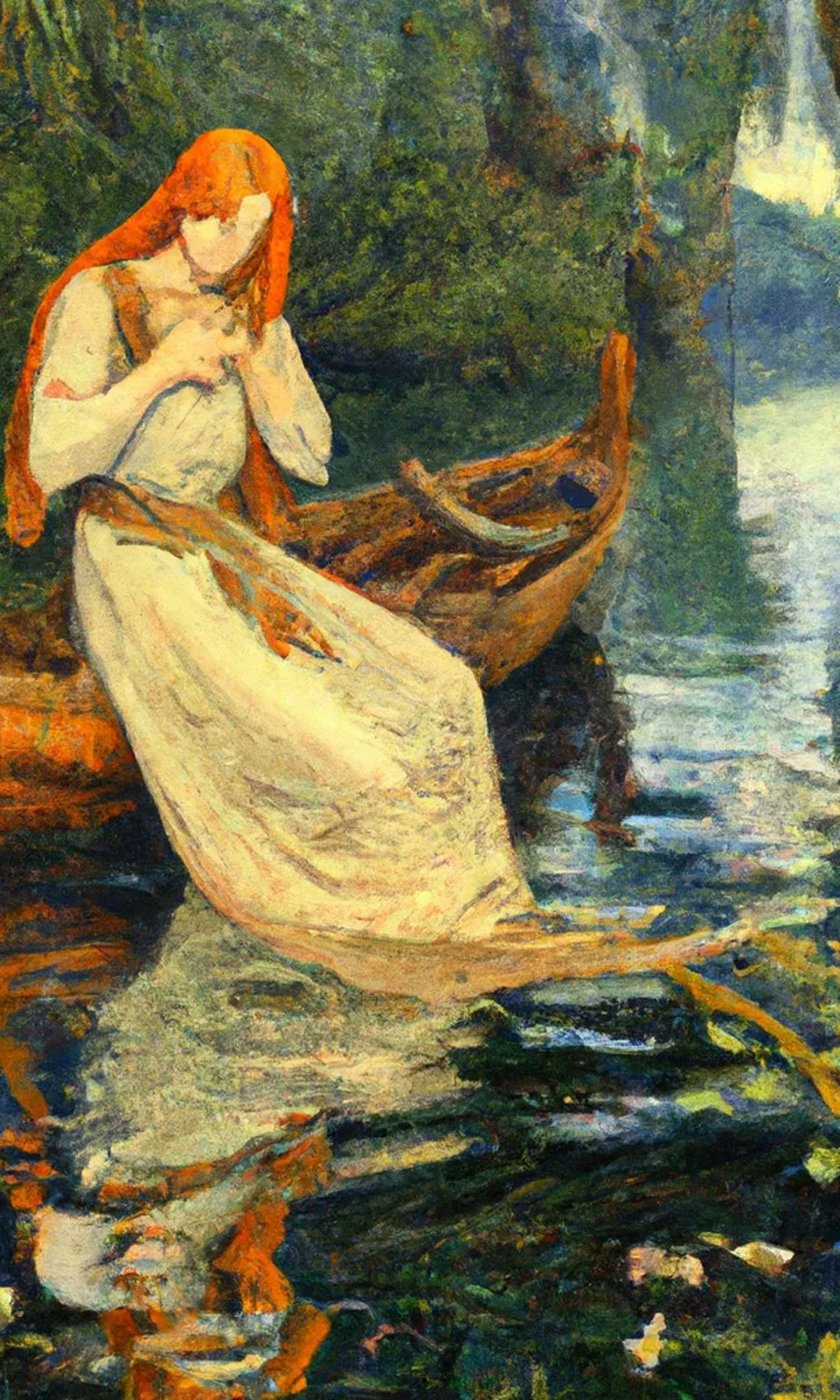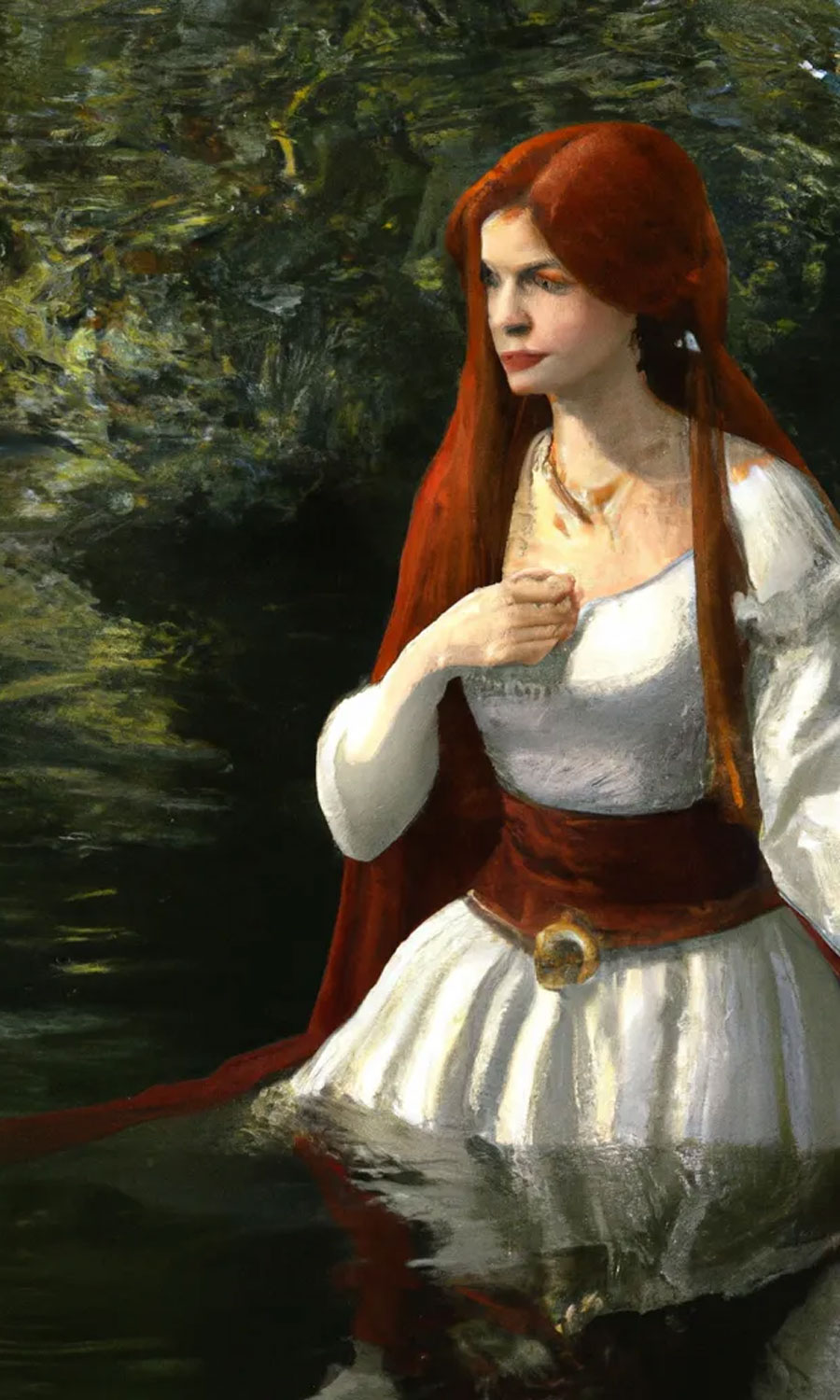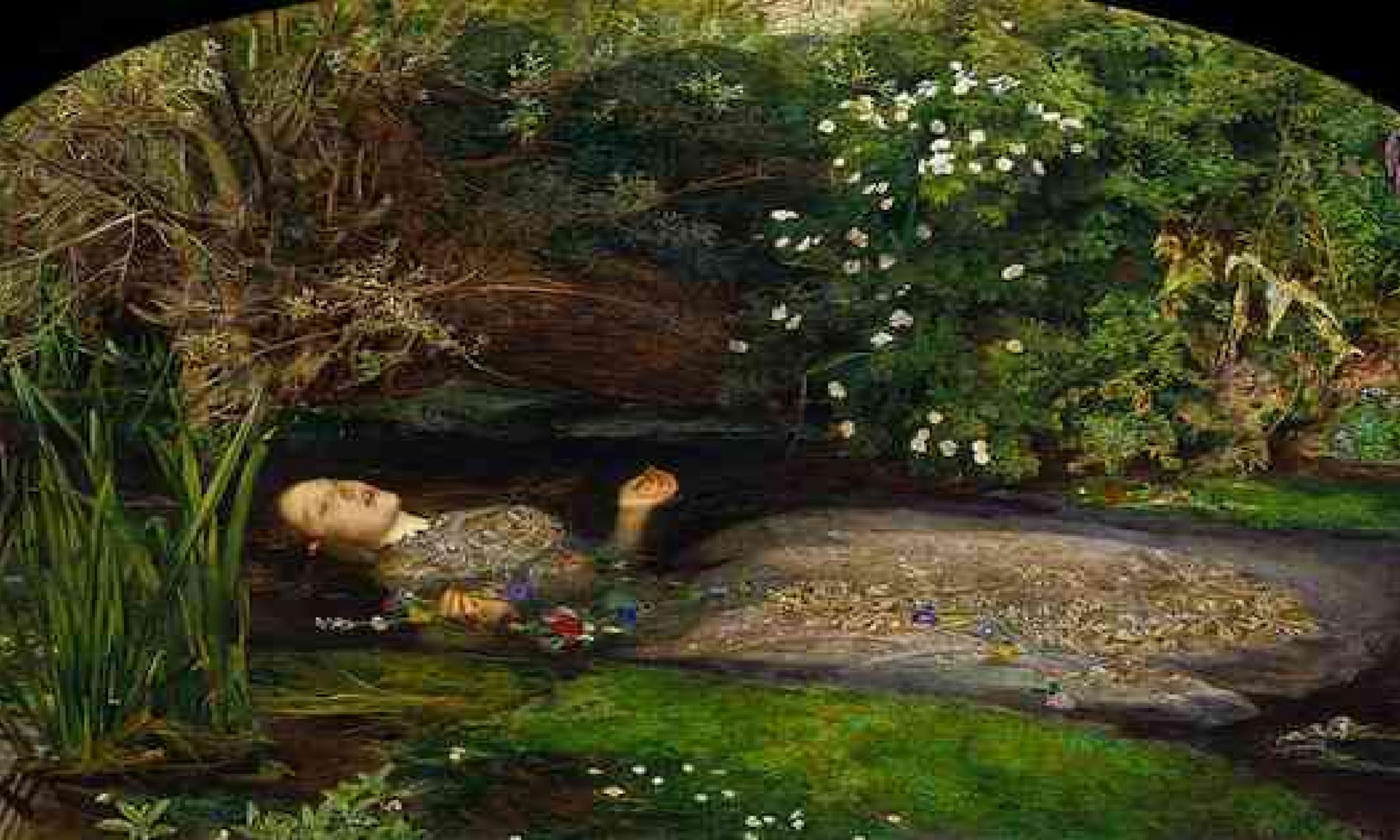
In the tragedy of Shakespeare, Ophelia Lady of Denmark is the fiancée of Prince Hamlet. To avenge his father, Hamlet fakes madness. Ophelia takes it for granted. Driven mad for real, she throws herself into the river. Rimbaud drew from this account one of his most beautiful poems. He was 16 years old.
I
On the calm black water where the stars are sleeping
White Ophelia floats like a great lily;
Floats very slowly, lying in her long veils…
– In the far-off woods you can hear them sound the mort.
For more than a thousand years sad Ophelia
Has passed, a white phantom, down the long black river.
For more than a thousand years her sweet madness
Has murmured its ballad to the evening breeze.
The wind kisses her breasts and unfolds in a wreath
Her great veils rising and falling with the waters;
The shivering willows weep on her shoulder,
The rushes lean over her wide, dreaming brow.
The ruffled water-lilies are sighing around her;
At times she rouses, in a slumbering alder,
Some nest from which escapes a small rustle of wings;
– A mysterious anthem falls from the golden stars.
II
O pale Ophelia! beautiful as snow!
Yes child, you died, carried off by a river!
– It was the winds descending from the great mountains of Norway
That spoke to you in low voices of better freedom.
It was a breath of wind, that, twisting your great hair,
Brought strange rumors to your dreaming mind;
It was your heart listening to the song of Nature
In the groans of the tree and the sighs of the rocks;
It was the voice of mad seas, the great roar,
That shattered your child’s heart, too human and too soft;
It was a handsome pale knight, a poor madman
Who one April morning sate mute at your knees!
Heaven! Love! Freedom! What a dream, oh poor crazed Girl!
You melted to him as snow does to a fire;
Your great visions strangled your words
– And fearful Infinity terrified your blue eye!
III
– And the poet says that by starlight
You come seeking, in the night, the flowers that you picked
And that he has seen on the water, lying in her long veils
White Ophelia floating, like a great lily.
Arthur Rimbaud, Recueil de Douai
 The Lady of Shalott, by Waterhouse
The Lady of Shalott, by Waterhouse
I learned this sublime poem when I was 12 years old. To illustrate it, what could be more appropriate than John William Waterhouse’s painting? No canvas of Ophelia, old or modern, excites me as much as this Lady.
John William Waterhouse, (1849-1917), a British painter close to the Pre-Raphaelites, is known for his paintings inspired by mythology and literature.
The Lady of Shalott has haunted me since childhood. A large poster decorated my teenage bedroom. I exhumed it from a cardboard drawing it found its place in my old supper.
Under the subtle brush of Waterhouse, Lady Shalott makes a perfect Ophelia. English like Shakespeare, John William Waterhouse painted this painting in 1888, eighteen after young Arthur Rimbaud composed Ophelia.
Prince Hamlet is not an invention of Shakespeare. He ruled Denmark in the 8th century, while Camelot’s gesture took place just two centuries earlier. The white dress of the young Lady evokes the long veils lily color of the poem of Rimbaud.
 The bracelets she wears, the ornaments of the boat could stick with the epic of Arthur. If this lady isn’t drowned yet, she’s gonna jump in the water the next minute. Her desperate face and the leaning boat confirm this impression.
The bracelets she wears, the ornaments of the boat could stick with the epic of Arthur. If this lady isn’t drowned yet, she’s gonna jump in the water the next minute. Her desperate face and the leaning boat confirm this impression.
Still due to the talent of Waterhouse, here she left the boat and slowly sinks towards her death. What could be more romantic than this medieval Lady? Besides painters, she inspired more than one English poet.
by Tennyson
Alfred Tennyson (1809-1892) 1st Baron Tennyson, was one of the most famous British poets of the Victorian era.
Like other ancient poems — Sir Lancelot, Queen Guinevere, Galahad — the poem recounts an Arthurian legend freely inspired by medieval sources. And Arthur Rimbaud quentch his thirst at the same spring.
It is a river poem of 19 verses in three parts.
On either side the river lie
Long fields of barley and of rye,
That clothe the wold and meet the sky;
To many-tower’d Camelot;
And up and down the people go,
Gazing where the lilies blow
Round an island there below,
The island of Shalott.
There she weaves by night and day
A magic web with colours gay.
She has heard a whisper say,
A curse is on her if she stay
To look down to Camelot.
She knows not what the curse may be,
And so she weaveth steadily,
And little other care hath she,
The Lady of Shalott.
A bow-shot from her bower-eaves,
He rode between the barley-sheaves,
The sun came dazzling thro’ the leaves,
And flamed upon the brazen greaves
Of bold Sir Lancelot.
A red-cross knight for ever kneel’d
To a lady in his shield,
That sparkled on the yellow field,
Beside remote Shalott.
Ophelia of Shalott
Waterhouse had not finished with this princess. Inspired by Tennyson’s poem, he dedicated many paintings to her. None of them, in my view, is as good as the first. They deserve to illustrate this article. Article that I could not close without sharing this perfect illustration of Rimbaud.
If the romantic Lady de Shalott is not named Ophelia, I would be quite disappointed.

On the calm black water where the stars are sleeping
White Ophelia floats like a great lily


